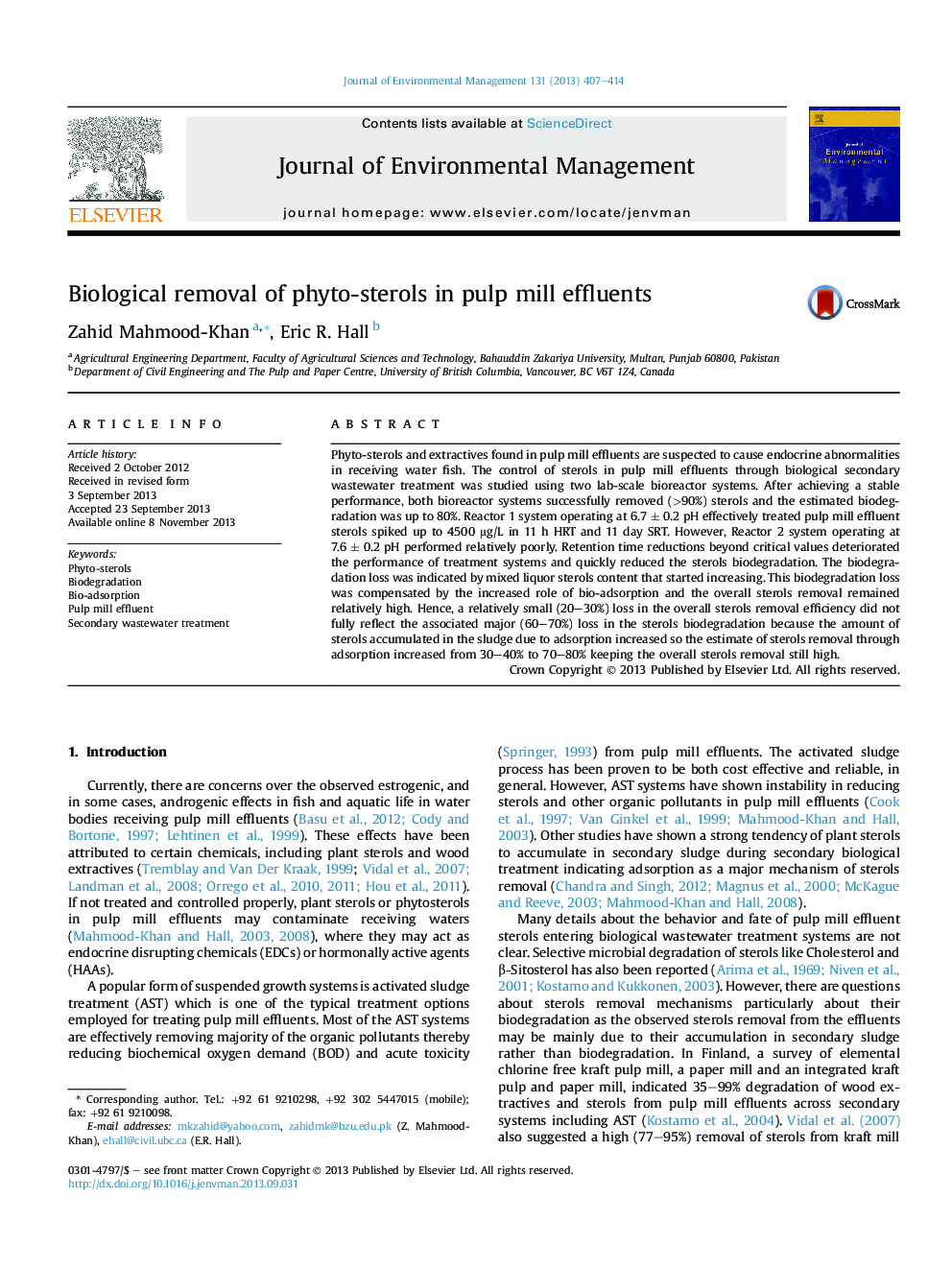| Article ID | Journal | Published Year | Pages | File Type |
|---|---|---|---|---|
| 1055968 | Journal of Environmental Management | 2013 | 8 Pages |
Abstract
Phyto-sterols and extractives found in pulp mill effluents are suspected to cause endocrine abnormalities in receiving water fish. The control of sterols in pulp mill effluents through biological secondary wastewater treatment was studied using two lab-scale bioreactor systems. After achieving a stable performance, both bioreactor systems successfully removed (>90%) sterols and the estimated biodegradation was up to 80%. Reactor 1 system operating at 6.7 ± 0.2 pH effectively treated pulp mill effluent sterols spiked up to 4500 μg/L in 11 h HRT and 11 day SRT. However, Reactor 2 system operating at 7.6 ± 0.2 pH performed relatively poorly. Retention time reductions beyond critical values deteriorated the performance of treatment systems and quickly reduced the sterols biodegradation. The biodegradation loss was indicated by mixed liquor sterols content that started increasing. This biodegradation loss was compensated by the increased role of bio-adsorption and the overall sterols removal remained relatively high. Hence, a relatively small (20-30%) loss in the overall sterols removal efficiency did not fully reflect the associated major (60-70%) loss in the sterols biodegradation because the amount of sterols accumulated in the sludge due to adsorption increased so the estimate of sterols removal through adsorption increased from 30-40% to 70-80% keeping the overall sterols removal still high.
Related Topics
Physical Sciences and Engineering
Energy
Renewable Energy, Sustainability and the Environment
Authors
Zahid Mahmood-Khan, Eric R. Hall,
